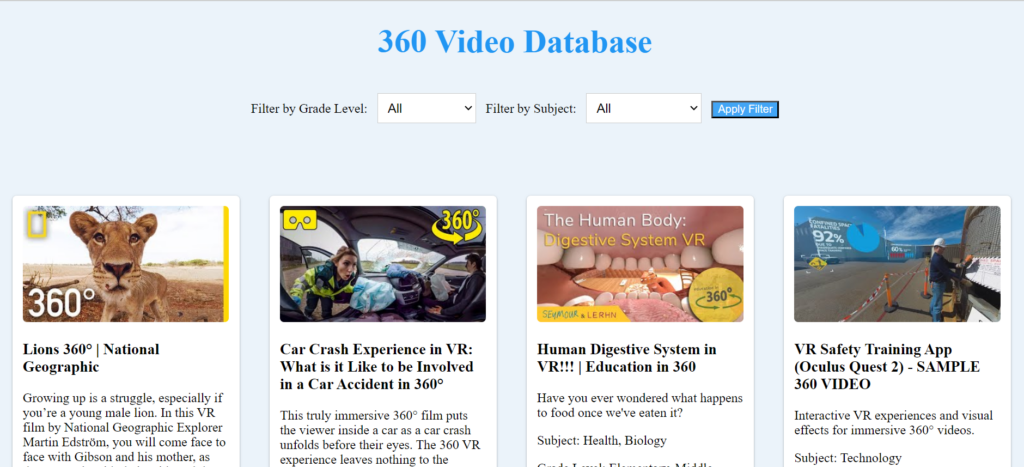360 Video Database

During my internship at Lenovo, I conducted an in-depth analysis of several hundred 360° videos hosted on YouTube, all intended for integration into Lenovo’s Immersive Learning Hub. This hub forms an integral part of Lenovo’s free resources offered to educators, ideally used in conjunction with their Virtual Reality (VR) Classroom suite.
Each video underwent rigorous categorization based on criteria such as grade level, subject, and other intrinsic metadata embedded within the video thumbnails. Leveraging the power of Python scripting in combination with the YouTube Data API, we crafted a solution that efficiently processes video URLs to extract vital data elements, including descriptions, source, and thumbnail images.
This extracted data was subsequently compiled into an HTML file, which serves as an easily sharable and viewable version of the analyzed 360° videos. This database not only holds the essential video information but also presents it in a user-friendly, visually engaging, and interactive format as they were previously held in an Excel document. By implementing a dual-filtering system, users can effortlessly browse and select videos based on specific grade levels and subjects, enhancing the user experience significantly and enabling faster access to relevant educational content.
This HTML file, which is the tangible output of our comprehensive analysis and data extraction process, is available for download below. I invite you to explore this immersive educational video database, a testament to the potential of combining advanced scripting, API utilization, and user-centric design in creating impactful educational resources.
*HTML files cannot be uploaded onto WordPress. Open the Google drive, download the HTML file, and then open it.
https://drive.google.com/drive/folders/1dvBScDzrJqROXuly6LAgLOLwiyUNNTnZ?usp=sharing